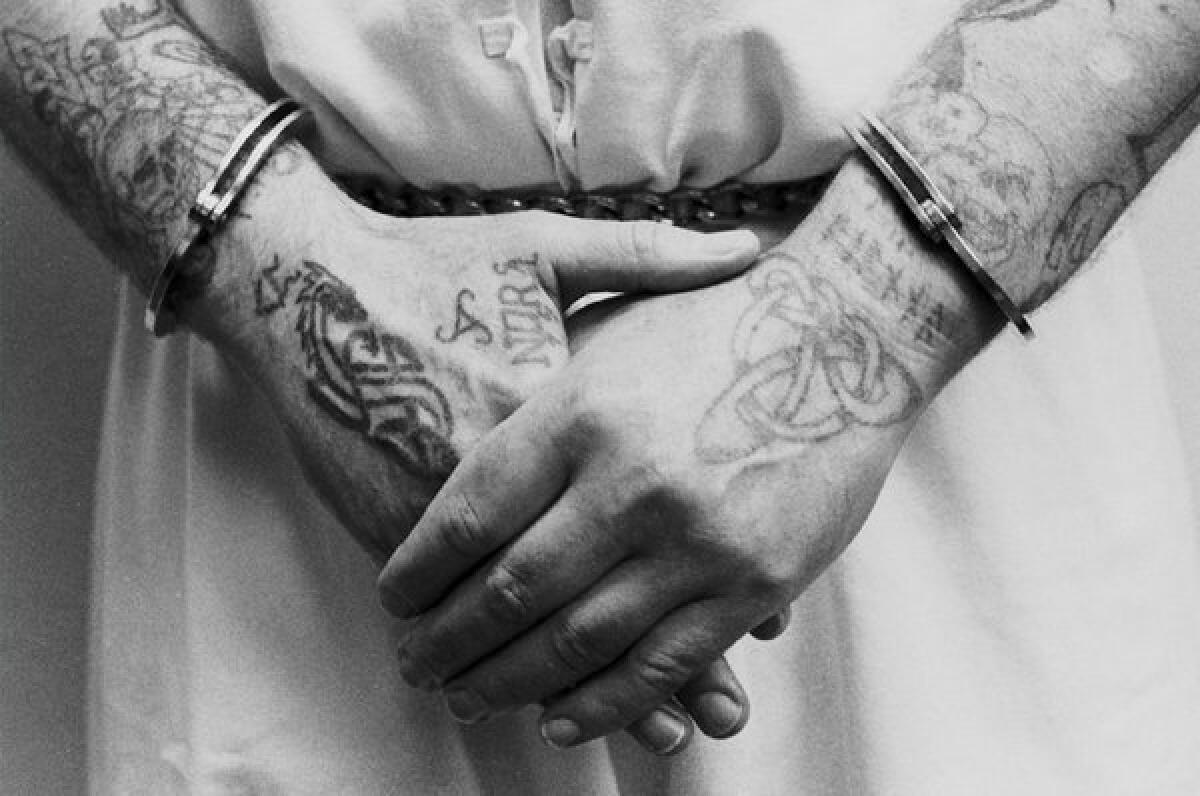Economists finally test prisoner’s dilemma on prisoners

For six decades, the classic cooperation test known as the prisoner’s dilemma has been a mainstay of graduate courses on game theory and behavioral economics, not to mention in Hollywood detective series.
Until recently, no one thought to test the game on actual prisoners.
A pair of German economists offered female prisoners a chance, and found they were more likely to act in cahoots than shaft the other prisoner, compared with female students in a control group, according to a study published in the August edition of the Journal of Economic Behavior & Oraganization.
Andreas Lange and Menusch Khadjavi, of the University of Hamburg, had already decided to use prisoners as test subjects for a broad behavioral economics study centered on altruism when the classic grad-school game came to mind.
“Once we started thinking about it, it was kind of fun to say, hey, there’s actually no study of the prisoner’s dilemma on prisoners, so let’s use this cute title to do some serious research,” Lange said.
Studies using token economies have been undertaken in prison settings before, although the vast majority of experiments use student recruits.
The game is more than academic. Such “non-cooperative pair scenarios” reveal behavior at variance with that of the reliably rational and self interested Homo economicus of textbooks. Researchers use it to probe risk, decision-making under strategic uncertainty, and how social factors mediate economic decisions.
Detective shows generally show only the simultaneous version of the game – one suspect has no idea what the other does. But economists add a sequential version in which Player 2 knows the choice of Player 1.
First, female prisoners and students played simultaneously, choosing letters and earning points that were translated into Euros afterward. Their choices then were randomly matched with others and analyzed.
If each player chose A, both would earn seven points. But by unilateral betrayal (BA and AB), either player could earn nine and leave the other with one. Mutual betrayal (BB), however, would net three points apiece.
Game theory’s “Nash equilibrium” point for Homo economicus is mutual betrayal -- both net three points. But that’s not how humans behave, and not how the students and prisoners did, either.
In the simultaneous game, a greater share of the prisoners solved their dilemma through cooperation: 55% chose A, compared with 37% of students.
The difference between the students and prisoners “may come down to education; it may come down to age, but the feeling that we have is the social structure inside the prison is such that you survive better if you cooperate,” Lange said.
Round 1 of the sequential game was identical to the simultaneous game rules. In Round 2, however, participants were shown the answer of a randomly selected partner, then asked to choose again.
Prisoners tended to play Round 1 roughly the same way they had played the simultaneous game - with a statistically insignificant drop in preference for option A. But the proportion of students who picked A leaped to 63% in the first round of the sequential game, from just 37% in the simultaneous game.
Unsurprisingly, betrayal was reciprocated in Round 2, although for unknown reasons, one of the 29 prisoners chose A despite seeing her partner’s B.
Among both groups, Player 2 also was more likely to reciprocate Player 1’s cooperation, choosing A and earning seven, rather than defecting and earning nine.
While risk aversion differences could explain much of the student-prisoner disparity, Lange said, student first choosers also could have found it easier to infer odds or decipher their peers’ strategies.
“As a student, I know other people are probably similar to me,” Lange said. “While maybe in prison the heterogeneity is greater and they may not be able to know how the other person thinks; so they may be hesitant to expose themselves to the risk of being exploited.”
Other data not included in the study suggest that the risk profile of the students was more evenly distributed, while the prison profile was skewed toward extreme risk taking and extreme aversion, Lange said.
The results suggest that social preferences, reciprocity, envy and exploitation aversion can confound the economic behavior predicted in textbooks.
“People are not always just maximizing profits,” Lange said.
Both authors cautioned that the fundamental difference between a college campus and prison yard could have influenced the results. Inmates could be more likely to run into fellow participants afterward. Students on a large campus can avoid each other, and their “sentence” usually is a lot shorter.
For the Freakonomics fans, here’s a correlation: when other sociodemographic variables were controlled, the only factor that correlated with cooperation was coffee drinking.
“We refrain from speculating about the underlying reasons,” the authors concluded.







